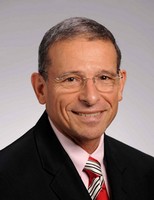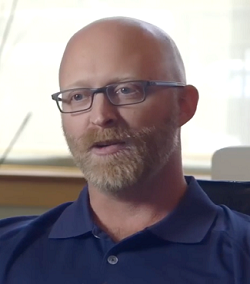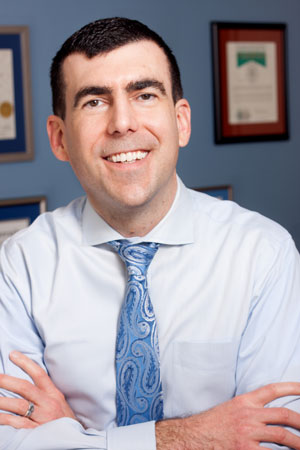Transcripts

Erik: Joining me now is petroleum geologist Art Berman, who, as always has prepared one of his terrific slide decks to accompany today's interview. Registered users will find the download link in your research roundup email. If you don't have a research roundup email, that means you're not registered yet at macrovoices.com. Just go to the homepage macrovoices.com. Look for the red button that says “Looking for the Downloads” just above Art's picture.
Art, it's great to get you back on the show and to dive into another of your slide decks. But let's start with the big picture. Last time we talked to you, you had been projecting a decline in US production, which was running a little bit late, you said it might run even later than that. But you thought it was still coming at that point. And at that time, when we had you on in January, I think oil was in the 30s. You said it could go to 65 this year, and everybody thought you were crazy, because that number was too high. And of course we got there, not in the remaining 12 months of the year. But within the next 12 weeks we got to that number. So congratulations on getting a couple of calls right. But let's get the update. What do you see from here?
Art: Right? Well, a couple of things Erik. First, I'm gonna apologize for my voice. I have a little surgery. It doesn't sound as bad as it sounds, at least for me. But listeners will have to forgive me. Yeah. So you know, diving into, you know, the end of my slide deck if you like to. On slide seven, I haven't changed this chart since our January discussion, the only thing I've added, which is to say I haven't changed my outlook. Now, I understand that, you know, people are sure I'm wrong, because production is still hanging in there at you know, upper 10 to lower 11 million barrels per day and I may be wrong. And you know, anybody could be wrong.
But the way I look at this is, you know, you've, you got to drill wells to get a certain level of production, whatever you think about, you know, the time shifting and all of that in this chart. You know, we're at 323 oil directed rigs. as of March and we had been between 800 - 900 to support 11 million barrels per day. So, you know, simple math, you don't have to be a petroleum geologist says, you know, you're less than half the number of rigs, you need to support the production that everybody thinks is going to keep on going. And unless there's been some kind of, you know, absolutely magical technological breakthrough that I don't know about, I just don't see how it can happen.
You just don't have enough gas in the tank to get you there. Now, obviously, the part I could be wrong on is when's it gonna happen? Because, I mean, I don't honestly know. I don't think anybody really knows, you know, how many wells are being completed each month. The best we can do is the EIA drilling productivity report, which I study and analyze pretty carefully. And it tells me that, you know, the rig count is still a darn good proxy for well completions and etc. So, you know, I'm sticking to my story here.

Erik: Joining me now is our good friend Jeffrey Snider, Chief Investment Officer for Alhambra Investments and famous for his slide decks. Listeners, you'll find the download link for Jeff's slide deck associated with today's interview in your research roundup email. Now, if you don't have a research roundup email, that means you're not yet registered at macrovoices.com, just go to our homepage at macrovoices.com, click the red button that says looking for the downloads, just above Jeff's picture and just below the green Donate button.
Jeff, the big conversation we're having with all of our feature interview guests is inflation or deflation. And frankly, we've gotten to the point where it's hard to find any deflationists left. We had Steven Van Meter on a couple of weeks ago as you know. We've got you, we've got David Rosenberg scheduled. We're trying to get Lacey Hunt. I think that's all the deflationists that there are at this point. Now I saw that the finance secretary of the Philippines was rushing a $1 bond sale because he wanted to get it done before interest rates skyrocket. That's exactly what he actually said.
So it seems like there's nobody left almost who doesn't think that both inflation and bond rates are headed higher. Richard Nixon once said, we're all Keynesian now butchering something that Milton Friedman had written a few years earlier. But in 2021, it really does seem like almost all of the macro gurus that we know, that we invite on macro voices have turned into what Louie Vincent Gave called inflationistas. Maybe you and Steven Van Meter, and Brent Johnson and, I guess David Rosenberg are the holdouts. But it's getting to be a pretty darn lonely place for you remaining deflationists.
Jeff: Yeah, you know, I think when you think about it, Erik that history has repeatedly warned against some of the things that we're kind of seeing now, these excesses. And I think there's some intuitive sense behind why everybody's starting to think about inflation and only inflation. As you know, very well, Erik, I personally don't equate it to what governments are in central banks are doing to that at all. I don't think I'm alone in that view, though. And I think that's where I really object.

Erik: Joining me now is Jesse Felder, publisher of The Felder Report and former hedge fund portfolio manager. Jesse, it's great to have you back.
Listeners, Jesse did prepare a chart deck to accompany today's interview, you'll find the download link in your research roundup email. If you don't have a research roundup email, it means you're not registered yet. Just go to our homepage macrovoices.com, look for the red button above Jesse's picture that says, "looking for the downloads".
Jesse, great to have you back. I've been starting all of our interviews asking people about boy, so many smart people have turned into inflationist in the last year or so where do you stand? Are you an inflationista as Louis-Vincent Gave called it or are you still in the deflationista camp?
Jesse: I am in the inflationista camp and, Erik, I gotta say, it's great to be back. You know, it was, I think a little over a year ago when we last spoke here. And you know, right before the COVID crash, and it's kind of been an interesting 13 months since then. But yeah, I am in the inflation camp, I think that we're going to see, you know, to me, one of the things I look at is the, you know, just prices paid components of a lot of these things that we've seen, you know, ISM services came out this week. But businesses of all stripes are all basically complaining about rising cost pressures. And I think we're seeing that in tons of different sectors, from manufacturing to restaurants. I think we're gonna see some pretty strong wage inflation over the next few months, which is one of the things that can be a driver of inflation going forward.

Erik: Joining me now is Steven Van Metre from stevenvanmeter.com also the host of his own macro YouTube channel but most interesting to us at MacroVoices as perhaps the last deflationists standing. Not actually the only one Steven, but you're one of few so why don't we start with just the big picture. You know, a lot of us myself included have really come around to a view that we're looking at a shift towards secular inflation. Different people think different things about how far off it is. There aren't too many of you guys left that don't see that way at all so tell me where you want to start. Either with why deflation or why not inflation?
Steven: Yeah you know Erik, I think it's easy to see why we should have inflation right. I mean housing prices are up, stock markets up, treasuries up, crude oils up, i mean food prices are up. I mean it's hard not to think that we're going to see this secular rise of inflation and yet we continue to see these deflationary pressures on the economy and people say well that will go away as soon as the reopening is done.
Once people get back to work but yet when you when you look at this from a monetary perspective and when you really understand how quantitative easing works and its effect on the economy. What you find out is we're in a liquidity trap and even worse the fed created the liquidity trap and the problem with liquidity traps is they're disinflationary and if they're let run too long, they become outright deflationary and so when you understand that we're in a liquidity trap, you realize that these disinflationary pressures aren't going away and the biggest risk we have then is turning into deflation.

Erik: Joining me now is billionaire financier Robert Friedland, best known as the founder and CEO of Ivanhoe Mining. But perhaps more relevantly to this conversation, Robert is also the chairman and CEO of Ivanhoe Capital Corporation. The private venture capital and family office enterprise, which invests in a lot of fascinating technologies that I want to talk to Robert about today in this interview.
Listeners, if you didn't catch it in the introduction with Patrick Ceresna. Please be sure to first listen to my two interviews with Robert on the subject of greening the global economy on the Smarter Markets podcast, because what we're going to do in today's interview is to expound on that conversation. If you didn't hear that conversation, today's conversation isn't going to make sense.
Robert, let's start not with those topics. But with you as an investor because your mind absolutely fascinates me. You wowed our Smarter Markets audience with the story of Camel Polo in the snow on your albino racing camel. So we kind of have this vision of Robert Friedland as the camel riding mining executive who sounds like an Indiana Jones kind of character. But you were one of the principal investors and creators of satellite radio Sirius and XM Satellite Radio. So I'm just trying to imagine how does a mining executive sit down one day and say, Hey, I think I'll take advantage of advancements in MOSFET transistors and, you know, invent Sirius XM radio? How do you know about all these things, and thorium reactors and all the other things that we're going to talk about today?
MACRO VOICES is presented for informational and entertainment purposes only. The information presented in MACRO VOICES should NOT be construed as investment advice. Always consult a licensed investment professional before making important investment decisions. The opinions expressed on MACRO VOICES are those of the participants. MACRO VOICES, its producers, and hosts Erik Townsend and Patrick Ceresna shall NOT be liable for losses resulting from investment decisions based on information or viewpoints presented on MACRO VOICES.
